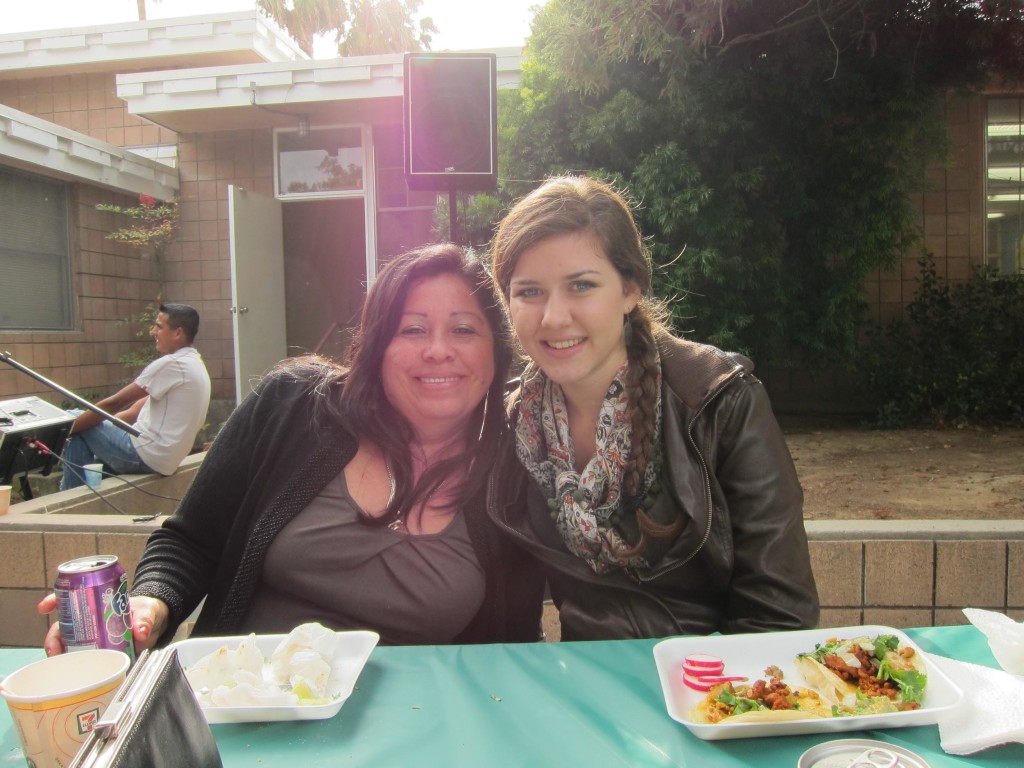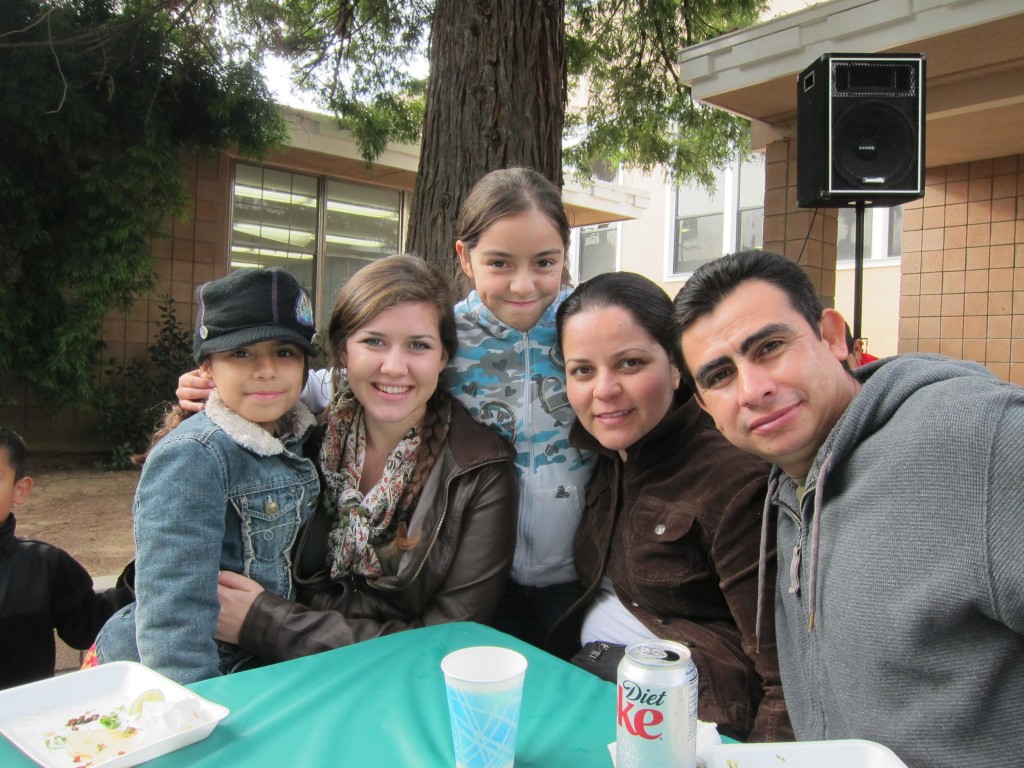 As a committed student of Spanish, I have always sought out opportunities to immerse myself in the language and converse with native speakers. Though it almost always was difficult and uncomfortable, I learned a lot that way. Ever since I started studying in Spanish my sophomore year of high school, I have been driven by an inexplicable desire to be able to communicate in this language like a native speaker. Being homeschooled in high school, my parents sent me twice a week to a friend’s house to speak with her: she was a Mexican lady, a friend of the family, who had come to the US as a teenager. I helped her with her two kids for a few hours a week and as we talked, cooked, and cleaned, she helped me wrap my head around practically using the grammar and vocabulary I was studying in my textbook.
As a committed student of Spanish, I have always sought out opportunities to immerse myself in the language and converse with native speakers. Though it almost always was difficult and uncomfortable, I learned a lot that way. Ever since I started studying in Spanish my sophomore year of high school, I have been driven by an inexplicable desire to be able to communicate in this language like a native speaker. Being homeschooled in high school, my parents sent me twice a week to a friend’s house to speak with her: she was a Mexican lady, a friend of the family, who had come to the US as a teenager. I helped her with her two kids for a few hours a week and as we talked, cooked, and cleaned, she helped me wrap my head around practically using the grammar and vocabulary I was studying in my textbook.
Fast forward to college: I was in my sophomore year preparing for a study abroad semester in Seville, Spain the following year. I was a Spanish major, but wasn’t taking any Spanish classes during this particular semester, and decided to take my language learning into my own hands. I sought out involvement with Pura Vida, a Hispanic church with people who had come to Santa Barbara, California from all over Central America. Each week was an exercise in observation and in being comfortable with being uncomfortable, as I attempted to mimic ways they spoke and greeted each other and challenged myself to not leave before speaking to at least three different people. I stuck out like a sore thumb! Before I share what I learned from the two years I was involved in this community, let me tell you the following story which occurred toward the beginning of my time at Pura Vida:

I was at Leadbetter beach in Santa Barbara, CA, on a gorgeous Sunday afternoon. Not knowing where to sit I placed myself across from the table from two friendly looking ladies I had spoken briefly with previously. We were sitting next to the beach, enjoying a church cookout and the delicious barbequed carne asada: (thin, marinated beef steak), a typical cookout food, as common as hamburgers and hotdogs are in America for this occasion. I was excited at this opportunity to make new friends while practicing my Spanish at the same time. As I sat there staring and smiling at the ladies, I felt the burden of being the conversation starter since I was the one who had asked to sit at their table: I viewed the silence as not something to enjoy on this beautiful day in the presence of friends, but as something scary and awkward that needed to be filled with speech. As quickly as I could I tried to gather my thoughts and think of conversation topics that these two ladies might find interesting and ones that would include my limited Spanish vocabulary: ¿De dónde es Ud.? “Where are you from?”, ¿Dónde vive? “Where do you live?”, ¿Tiene más familia en su país? “Do you have more family back in your country?”, ¿Cómo es su familia? “What is your family like?” ¿Cuánto tiempo lleva en Santa Barbara? “How long have you been in Santa Barbara?”, ¿Dónde trabaja? “Where do you work?”
I started firing these questions at them. They graciously answered my questions, but then failed to continue the conversation, slipping back into silence and eating some food, or gazing at the ocean. “How strange!” I thought. “Aren’t people supposed to return your questions?”
“What’s wrong? I am just trying to be friendly. . . do they not want to talk to me? . . . maybe I should stop asking them questions . . .” Thoughts started racing through my head as I alternated between smiling awkwardly, playing with my food, looking at the ocean, and looking around at the other people at other picnic tables. I somehow survived for another hour or so, but left the event feeling a little uncomfortable. But as I continued to attend the different church events, I started to be more observant. I realized that the way people went about starting friendships in my culture was different than the way this community started relationships. I valued talking: I thought that you got to know someone through talking and exchanging as much personal information as time would allow. As I continued to spend more time with this group of people, I realized that bonding happened more through spending time together, not through frantically exchanging personal information. Yes, they did talk about their lives and ask each other questions, but this came more naturally as they spent time together eating, relaxing, and sharing experiences. I decided to change my approach to friendships and started to enjoy my time with people more than the quality of conversation that took place.
As all uncomfortable, challenging situations usually are, this experience was one of the richest cross-cultural experiences I have had, even though it occurred right here in the US! It took a lot of persistence and drive: I arrived promptly at church each week on my bike (I biked down the mountain from my college), dreading the uncomfortable feeling as I glided down the Santa Barbara hills, knowing that I would feel strange being one of the two Americans in attendance, but having that immediately replaced by the welcome I received from each person. After several weeks of singing on the praise team, attending various parties, get togethers, and Bible studies, exchanging saludos (greetings), abrazos (hugs), and besos (kisses), I became an accepted and well-loved part of their community.

That day back at the beach was the start of some very dear, close friendships which I kept up for several years after leaving the area. I also grew so much personally, becoming aware of my own conversational style, challenging myself to not run away from uncomfortable situations, stepping out of my comfort zone to interact with others very different from myself, experiencing how it feels to be a minority, and learning how to serve with and learn from people from other cultures. When I came back from Spain, my friends complimented on how much my Spanish had improved, but I credit them and their help, their open, loving, and kind attitude toward me as integral to improving my language skills and helping me with the confidence I needed to become a fluent Spanish speaker.
I challenge you to be courageous and think about what new, different, unfamiliar situations you can put yourself in – you never know how you might grow, what you might learn, or what new friends you will make! Often in the US we emphasize the importance of overseas cross cultural experience, but there is so much opportunity to have intercultural experience right where we live! Do you have a story of your own to share about how a domestic intercultural interaction changed you? If so, feel free to comment below.
 About the Author: Sarah Holmquist currently lives in Baltimore, MD after completing her MA in Intercultural Communication from University of Maryland, Baltimore County. Her interests include: working with international students, training and facilitation, speaking and teaching Spanish, involvement with SIETAR USA, training for 1/2 marathons, and salsa dancing. You can learn more about her here.
About the Author: Sarah Holmquist currently lives in Baltimore, MD after completing her MA in Intercultural Communication from University of Maryland, Baltimore County. Her interests include: working with international students, training and facilitation, speaking and teaching Spanish, involvement with SIETAR USA, training for 1/2 marathons, and salsa dancing. You can learn more about her here.

